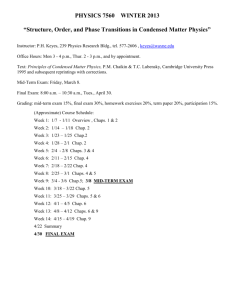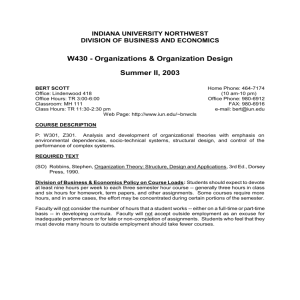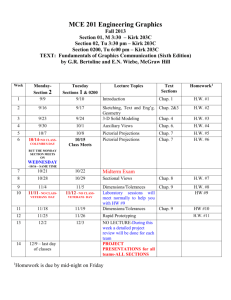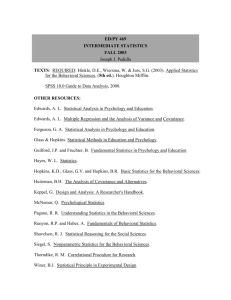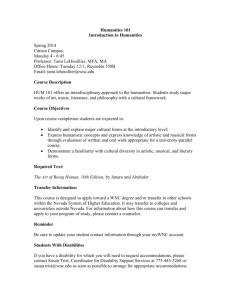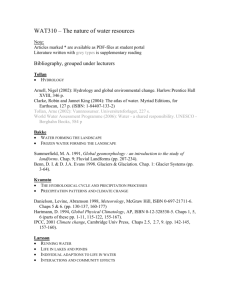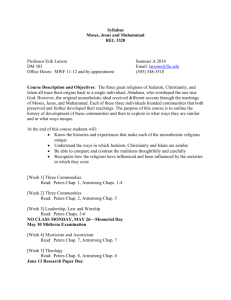MKT 101 Syllabus
advertisement
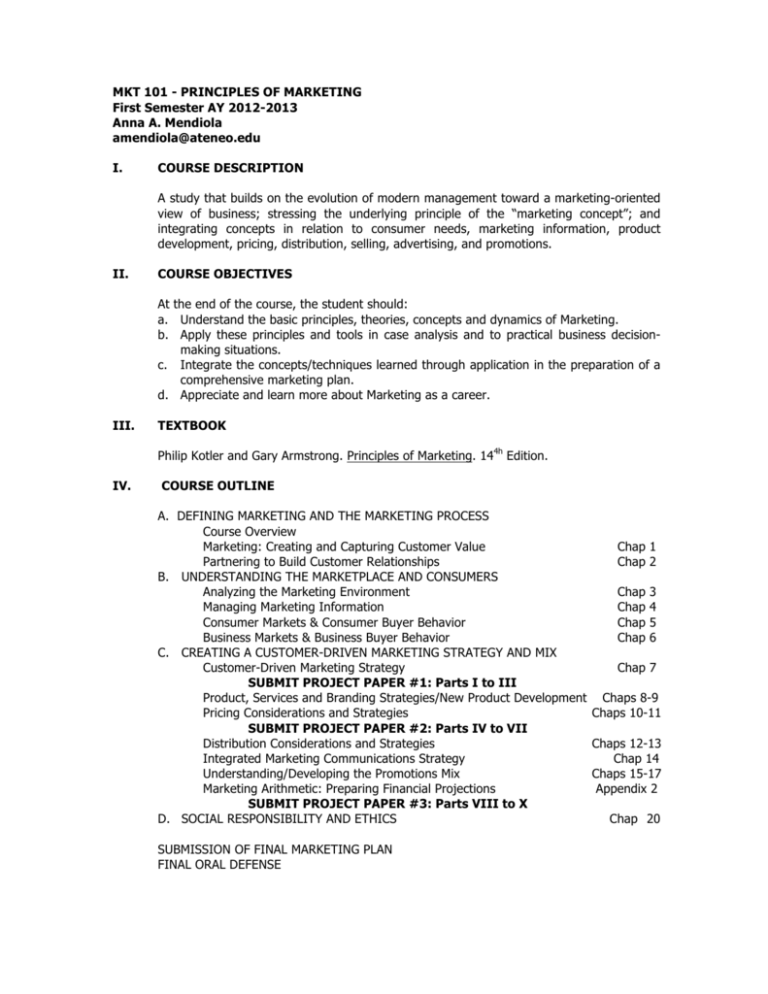
MKT 101 - PRINCIPLES OF MARKETING First Semester AY 2012-2013 Anna A. Mendiola amendiola@ateneo.edu I. COURSE DESCRIPTION A study that builds on the evolution of modern management toward a marketing-oriented view of business; stressing the underlying principle of the “marketing concept”; and integrating concepts in relation to consumer needs, marketing information, product development, pricing, distribution, selling, advertising, and promotions. II. COURSE OBJECTIVES At the end of the course, the student should: a. Understand the basic principles, theories, concepts and dynamics of Marketing. b. Apply these principles and tools in case analysis and to practical business decisionmaking situations. c. Integrate the concepts/techniques learned through application in the preparation of a comprehensive marketing plan. d. Appreciate and learn more about Marketing as a career. III. TEXTBOOK Philip Kotler and Gary Armstrong. Principles of Marketing. 144h Edition. IV. COURSE OUTLINE A. DEFINING MARKETING AND THE MARKETING PROCESS Course Overview Marketing: Creating and Capturing Customer Value Partnering to Build Customer Relationships B. UNDERSTANDING THE MARKETPLACE AND CONSUMERS Analyzing the Marketing Environment Managing Marketing Information Consumer Markets & Consumer Buyer Behavior Business Markets & Business Buyer Behavior C. CREATING A CUSTOMER-DRIVEN MARKETING STRATEGY AND MIX Customer-Driven Marketing Strategy SUBMIT PROJECT PAPER #1: Parts I to III Product, Services and Branding Strategies/New Product Development Pricing Considerations and Strategies SUBMIT PROJECT PAPER #2: Parts IV to VII Distribution Considerations and Strategies Integrated Marketing Communications Strategy Understanding/Developing the Promotions Mix Marketing Arithmetic: Preparing Financial Projections SUBMIT PROJECT PAPER #3: Parts VIII to X D. SOCIAL RESPONSIBILITY AND ETHICS SUBMISSION OF FINAL MARKETING PLAN FINAL ORAL DEFENSE Chap 1 Chap 2 Chap Chap Chap Chap 3 4 5 6 Chap 7 Chaps 8-9 Chaps 10-11 Chaps 12-13 Chap 14 Chaps 15-17 Appendix 2 Chap 20 V. COURSE REQUIREMENTS AND GRADING SYSTEM GRADING SYSTEM Class Participation Quizzes/Assignments Written Analyses of Cases (WACs) 15 percent 20 percent 15 percent Group Project Papers (3) Final Marketing Plan Mock Defense Final Oral Presentation 15 percent 5 percent 10 percent 20 percent GRADE EQUIVALENTS 3.76 3.31 2.81 2.31 to to to to 4.00 3.75 3.30 2.80 92-100 87-91 83-86 79-82 A B+ B C+ 1.81 to 2.30 1.00 to 1.80 Below 1.00 76-78 70-75 Below 70 C D F Notes about Specific Requirements: 1. Class Participation (15%) - Class participation is highly encouraged as it provides a good gauge of student’s interest in the subject. 2. Quizzes/Assignments (20%) - Quizzes will be unannounced with no makeup quizzes to be given. Other assignments shall be given as needed. 3. Written Analyses of Cases or WACs (15%) – Students are expected to analyze and recommend what to do in specific business situations by applying concepts and principles learned in class. 4. Group Project Papers (15%) – Each group is required to submit partial Project Papers that will serve as periodic updates of their progress in completing the Marketing Plan. These project papers will be graded. 5. Mock Defense (10%) & Final Marketing Plan (5%) - These are the culminating activities that will help integrate all concepts discussed in class. Each group is expected to come up with a comprehensive marketing plan for an approved product or service. (An outline is provided for your guidance). Focus should be on the development of sound, feasible & effective marketing programs that the student can defend in oral presentation. There will be a graded mock defense before Final Oral Presentation. 6. Final Oral Presentation (20%) – Each group will present their marketing plan to a panel of guest judges. The grade to be given by the panel will be considered final. VI. POLICIES 1. Mobile phones should be turned off or kept in silent mode during class hours. 2. Attendance will be checked. Students who are 15 minutes late and have no valid explanation for their tardiness will be considered absent. 3. The JGSOM dress code will be strictly enforced. Eating or drinking in class will not be allowed. 4. Dishonesty in all forms will be strongly penalized. 5. Students will be asked to force-rank themselves and other members of their respective groups for all group activities. The basis for their rankings will be the degree and significance of each member’s relative contribution to the group effort. These rankings will be considered in the grading of group work activities CONSULTATION HOURS: Tuesday / Thursday Wednesday : 2:00 – 3:00 pm : 2:00 – 4:00 pm DEPARTMENTAL MARKETING PLAN OUTLINE Project Summary – 5-10 pages to be submitted separately PICS Title Page I. Marketing Background A. Overview of the Industry 1. Market Size (Volume / Value) 2. Market Trends (Past 3-5 years) B. Market Profile (General purchase and usage habits) C. Environmental Analysis 1. Analysis of Opportunities and Threats 2. Key Success Factors II. Competitive Analysis A. Competitive Positioning B. Market Shares/ Sales Volume / Sales and Profit Trends C. Marketing Strategies (for each of the 4 Ps) D. Strengths and Weaknesses of Competition (in terms of 4 Ps) III. Company Background A. Company Profile B. Current Position of the Company/Brand in the Market C. Company/Brand Strengths and Weaknesses Analysis D. Brand Consumer Profile 1. Identified Market Segments 2. Market Needs Being Addressed 3. Buying Patterns 4. Usage Habits E. Present Marketing Strategy 1. Segmentation, Targeting and Positioning 2. Marketing Mix (Four Ps) 3. Competitive Strategies Employed IV. Identified Market Opportunity V. Proposed Target Market A. Demographics B. Psychographics C. Behavioral D. Geographic VI. Marketing Objectives A. Overall Marketing Objectives (A Brief Description of the Plan’s Short Term Goals, i.e. 3 years) B. Specific Objectives and Targets (3 years) 1. Market Shares 2. Sales (Volume and Value) 3. Profits 4. Distribution VII. Overall Marketing Strategy (A Brief Description of Overall Strategy for the Brand – Positioning Statement) VIII. The Marketing Mix (Should always be in comparison to competition) A. Product 1. Product Strategy 2. Product Description / Features / USP 3. Packaging B. Pricing 1. Pricing Strategy 2. Detailed Product Costing 3. Selling Price Index vs. Competition C. Distribution 1. Distribution Strategy 2. Trade Channels 3. Distribution Scheme D. Promotions 1. Overall Promotions Strategy 2. Advertising 3. Consumer and Trade Activities 4. Merchandising / Point of Purchase Materials 5. Publicity / Public Relations / Events IX. 3-Year Financial Forecasts A. Sales Volume/Value Projections B. Detailed Marketing Budget and Marketing Timetable C. Income Statement X. Attachments / Appendices


